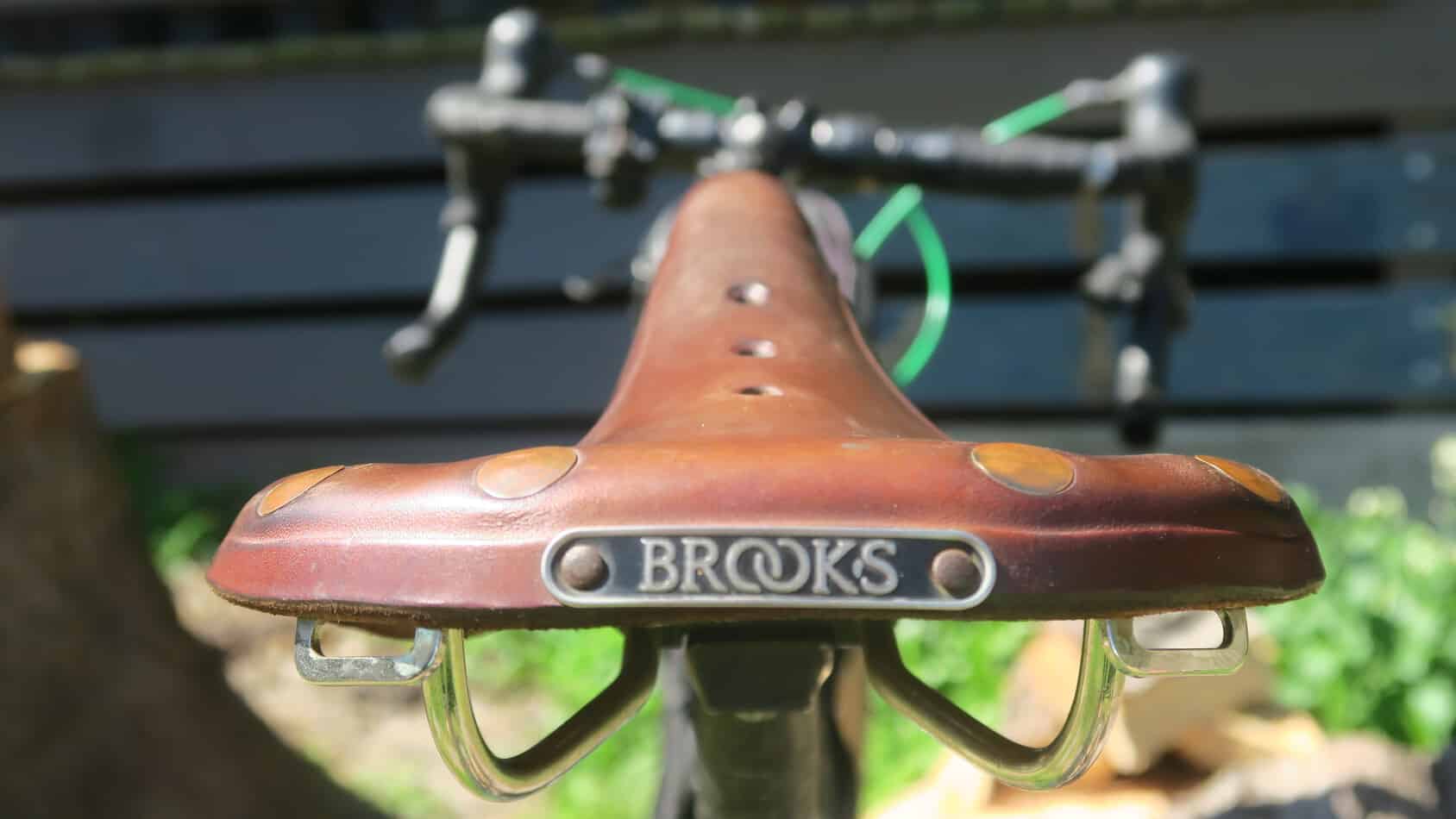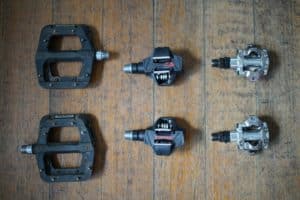Updated: 30th July 2025
Before diving into the best saddles for bikepacking and bicycle touring available in 2025, let’s cover the fundamentals of bike saddle comfort and understand what elements contribute to reducing discomfort during those long days in the saddle. Whether you’re searching for the most comfortable bike saddle for long rides or specifically need the best bikepacking saddle, this comprehensive guide covers everything you need to know.
How to Choose the Most Comfortable Bike Saddle
When searching for the best saddle for bicycle touring or your next cycling adventure, comfort is paramount. You want something that won’t cause pain or irritation during extended rides. But how do you choose the most comfortable bike saddle for your anatomy? The truth is, not all saddles fit everyone perfectly—there’s no universal solution since we’re all built differently.
Start by examining why you need a new saddle. What’s wrong with your current one? Is it uncomfortable, or simply worn down? If it’s just worn and you’ve been comfortable, finding a saddle with similar shape and dimensions is relatively straightforward, as many comparable options exist on the market.
Important Note: If you’re experiencing numbness or significant discomfort, consider getting a professional bike fit that includes saddle pressure mapping. If there’s swelling or persistent pain off the bike, consult your doctor.
Identifying the Problem
If your current saddle isn’t working, observe exactly what’s causing the irritation and discomfort. Could it be an incorrect bike fit with the seatpost at the wrong height for your body? Is the saddle too wide, causing chafing?
Consider your most comfortable riding position. Where does your pelvis naturally want to sit when properly positioned on the saddle? Are you trying to sit more forward, but the saddle nose is too hard and narrow?
Measuring Your Sit Bones
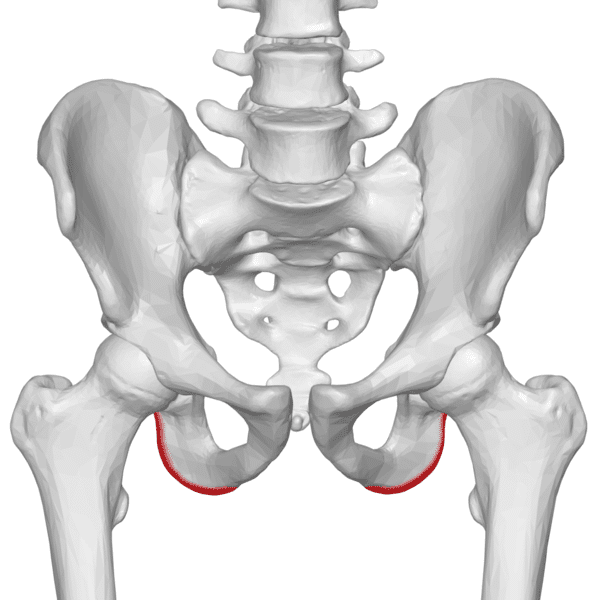
To find the right saddle width for your sit bones, you first need to measure them. You’re looking for the distance between the centers of your ischial tuberosities – the pointed lower parts of your pelvic bone on either side.
Many bike shops have measuring devices for this purpose. For a DIY approach, try this method from cycling forums: “Take a piece of aluminum kitchen foil and place it on a carpeted stair. Sit on the foil, lean forward slightly to approximate your riding position, then lift your feet. This should leave a clear impression of your posterior in the foil, and you can measure between the two deepest impression points to determine your sit bone width.”
Alternative DIY methods include using Play-Doh with cling film, or positioning two small erasers on a chair and adjusting them until they feel properly positioned under your sit bones.
Generally:
- Narrow sit bone width: 100mm or less
- Medium: 100-130mm
- Wide: Over 130mm
Saddle Size, Shape, and Materials
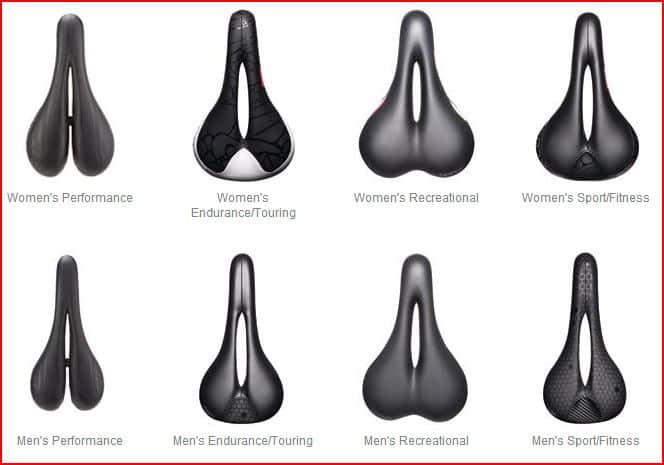
With your sit bone measurement in hand, selecting the right-sized touring saddle becomes much easier. For bicycle touring and bikepacking, where you’ll spend extended periods in the saddle day after day, you want a saddle that provides adequate cushioning for your sit bones and features a fairly long, narrow nose.
Saddle width is measured from edge to edge across the top at the widest point. Look for a saddle that accommodates your sit bone measurements without being significantly wider than necessary, as excess width can cause rubbing and chafing.
Don’t assume that more cushioning equals more comfort—this is a common misconception. Excessive padding can actually create pressure points as your body sinks into the saddle, leading to discomfort and chafing over long distances.
Material Options
Synthetic Materials: These saddles feature synthetic components throughout, making them low-maintenance and lightweight—popular choices for average cyclists. They require no break-in period and, combined with padded cycling shorts, can provide comfortable touring options. However, some long-distance cyclists find them too firm compared to other materials.
Leather: Leather saddles feature a leather top stretched over metal rails. The downside is a break-in period of approximately 200 miles, which can be uncomfortable initially. Once the saddle conforms to your body shape, it fits like a glove and provides exceptional comfort. Leather saddles require periodic treatment with leather conditioner to prevent deterioration from water and UV exposure.
Cotton/Canvas: These saddles offer comfort through slight stretching and movement while riding, providing excellent comfort and pedaling control without requiring the extended break-in period of leather.
Nothing beats actually sitting on a saddle to test its feel. Visit a bike shop to have a saddle fitted to your bike for a proper test ride.
Flexibility, Position, and Posture
Comfort often depends on proper bike setup and fit. If your seat height is incorrect or handlebars aren’t positioned for your riding style, it can result in saddle discomfort and pain in other areas like knees and Achilles tendons.
Getting a proper bike fit is highly recommended for optimal positioning and on-bike posture. Since you’ll spend many hours daily in the saddle, comfort is crucial.
Should You Consider a Center Cutout?
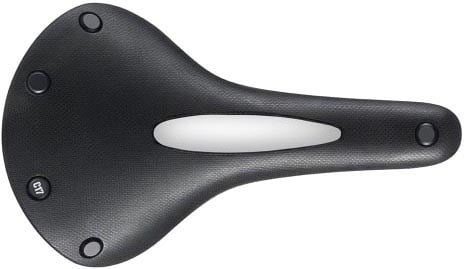
Center cutouts offer significant comfort benefits by protecting your perineum—the area between your sit bones that houses sensitive nerves and arteries. These saddles remove material that would otherwise contact your perineum, eliminating pressure and providing airflow during long rides.
Some saddles feature slight indentations in this area rather than full cutouts. While this works well for many riders, individual anatomy varies, so what works for others may not work for you.
Tips to Improve Saddle Comfort
If you’re still experiencing some discomfort, here are additional strategies:
- Stand periodically: Get out of the saddle regularly while riding to stretch and relieve constant perineal pressure
- Use your legs: Absorb bumps by standing up and using your legs as suspension
- Invest in padded shorts: Quality padded cycling shorts minimize friction, wick moisture, reduce chafing, and cushion impacts
- Consider suspension: A suspension seatpost can reduce shock transmission on rough terrain
The Best Touring Bike Saddles and Most Comfortable Bike Saddles for Long Rides: 2025 Edition
After consulting with over 50 experienced bike tourers and researching the latest 2025 releases, here are the top recommendations for the best saddles for bikepacking and long-distance bicycle touring. This collection represents the most comfortable bike saddles for long rides based on real-world testing and user feedback.
Most Comfortable Overall
Brooks B17 – The Gold Standard
The Brooks B17 is the original and best when it comes to comfort on the bike and has established itself as the gold standard for long-distance bicycle touring since the 1890s. It’s considered by many to be the best Brooks saddle for touring, and its design has remained essentially unchanged because it simply works.
This classic bike saddle from Brooks England is undoubtedly the most popular choice among touring cyclists seeking the ultimate in comfort. Brooks brand saddles, particularly the B17, are used by countless upright touring cyclists worldwide. Once broken in (around 300 kilometers), it provides exceptional comfort for all-day riding with a wonderfully smooth ride over long distances while being fantastically resilient. Read our review here.
The B17’s popularity among tourers is well-deserved – many consider it the last saddle they’ll ever need to buy.
Check current prices and availability
Brooks B17 Imperial (with Springs)
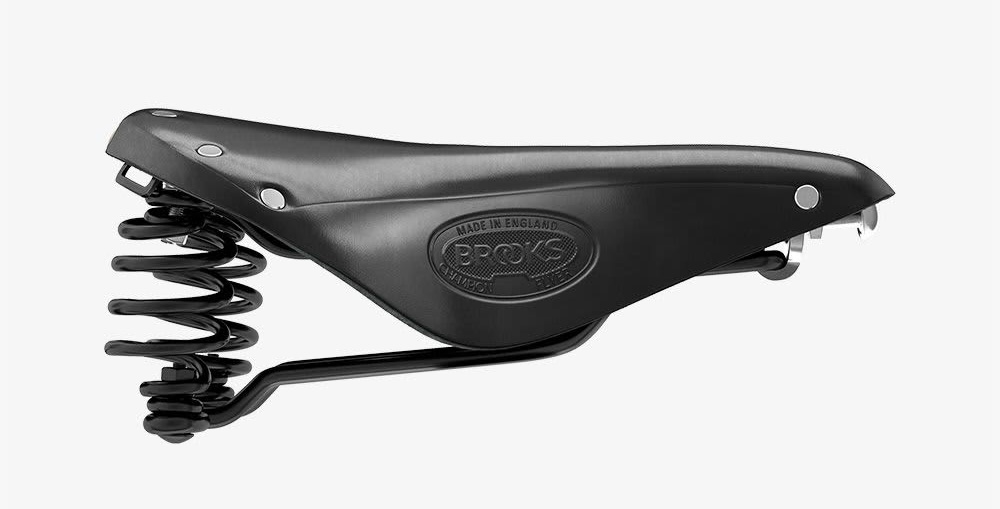
For riders seeking extra comfort, the Imperial version features a spring system at the saddle base. As one satisfied user noted: “I love the Imperial! The springs really help avoid lower back compression on rough terrain. I gladly trade a few grams for significant comfort improvement.”
Versatile All-Weather Options
Brooks Cambium C17 All-Weather
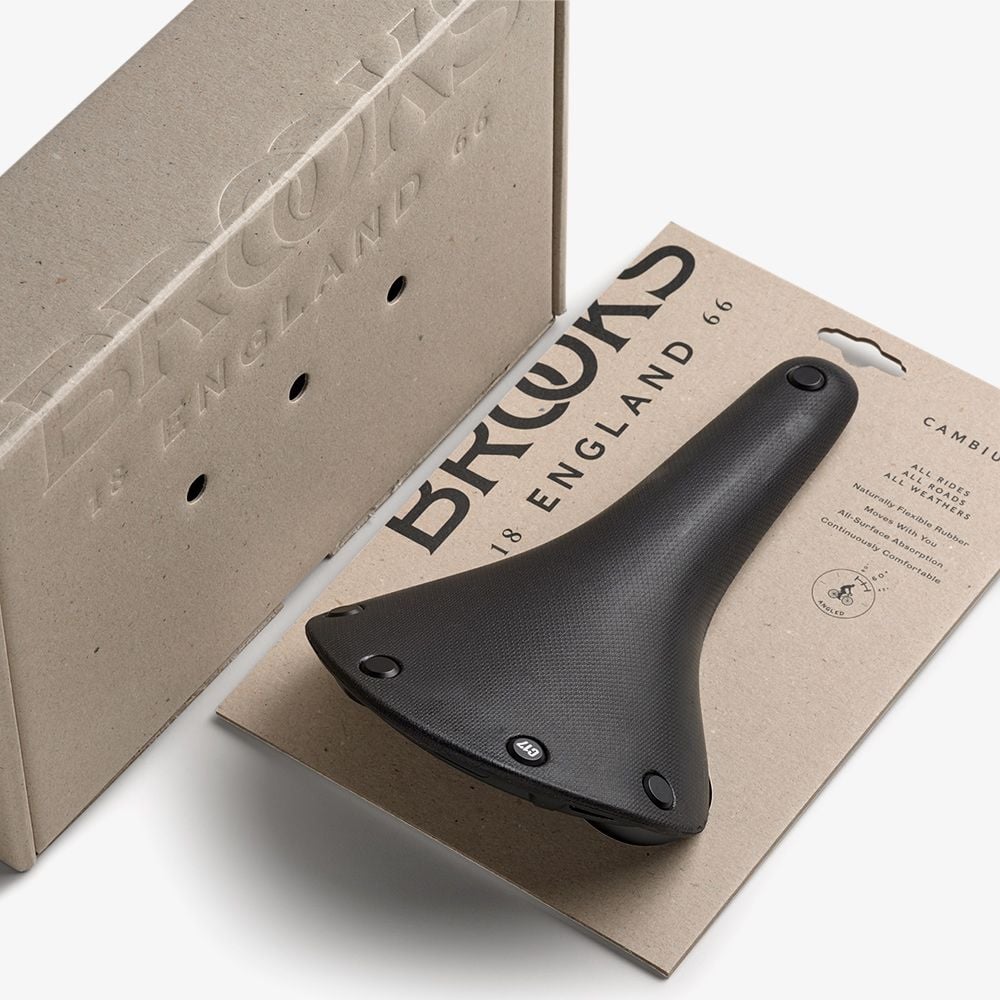
The Brooks Cambium C17 dampens vibrations nicely and represents Brooks’ synthetic offering from their classic bike saddles collection. Made from nylon for fade resistance, it’s completely weatherproof with full aluminum rivets. This saddle bridges the gap between traditional leather Brooks saddles and modern synthetic options, making it one of the best bikepacking saddles for variable weather conditions.
User feedback is mixed but generally positive: “It works best for me but takes getting used to. You must tilt it back until you find the sit bones. Takes time to position properly.”
Brooks C13 with Cutout
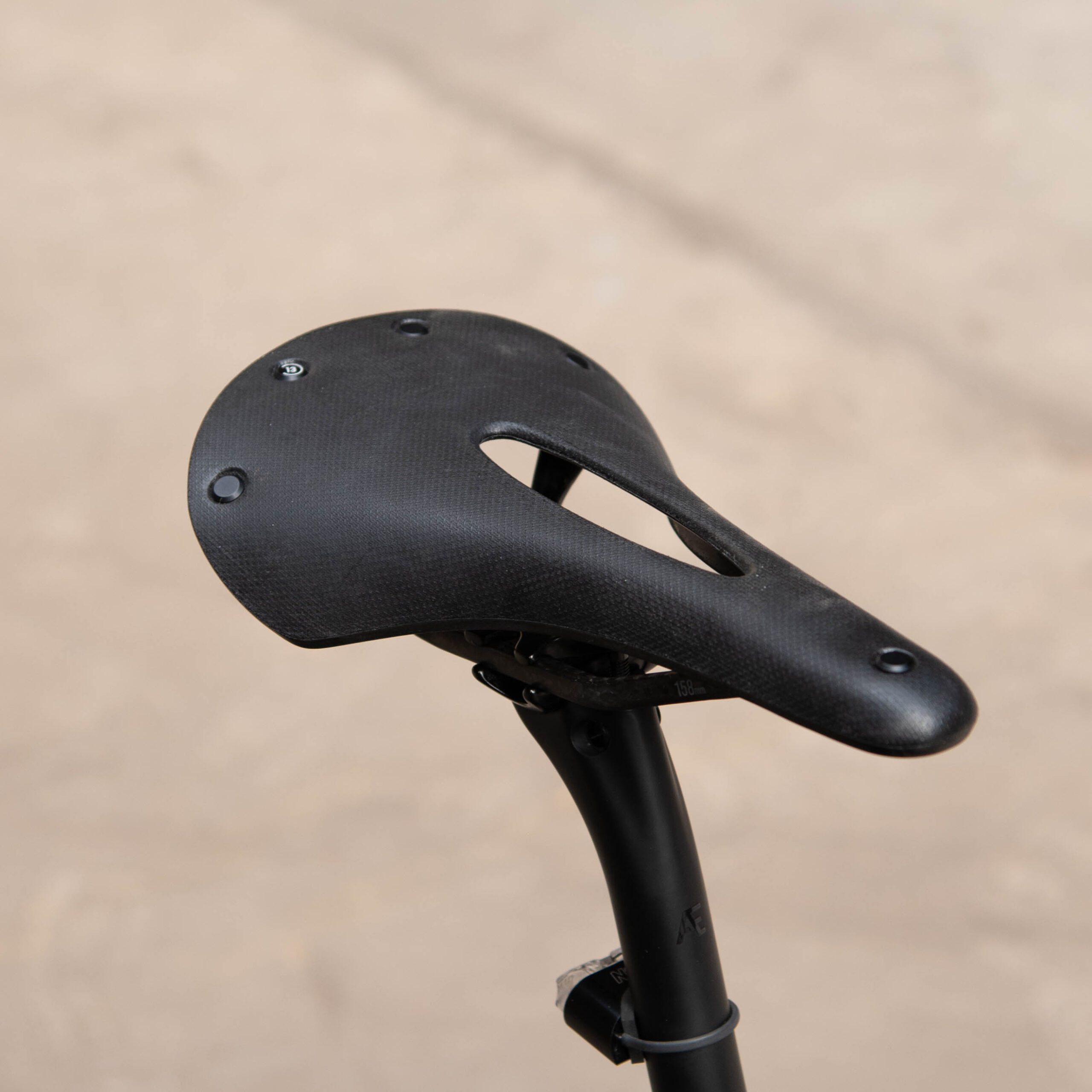
Entirely waterproof with organic cotton canvas construction, the C13 features a suspended top over a braided carbon frame, making it light and strong. The natural vulcanized rubber shell moves with the rider for responsive control.
Advanced Ergonomic Design
Ergon ST Core Prime

Designed specifically for touring and e-bike riders, this saddle relieves sit bone discomfort through its floating TwinShell concept with ergonomic core support. It accommodates sit bone widths from 120mm to 160mm and offers gender-specific shapes with relief channels.
One experienced tourer reported: “It took a few adjustments to get positioned correctly. After that, really comfortable every time over 600 miles and climbing. Best on paper and excellent in personal use.”
Performance-Oriented Options
Fizik Terra Argo X3
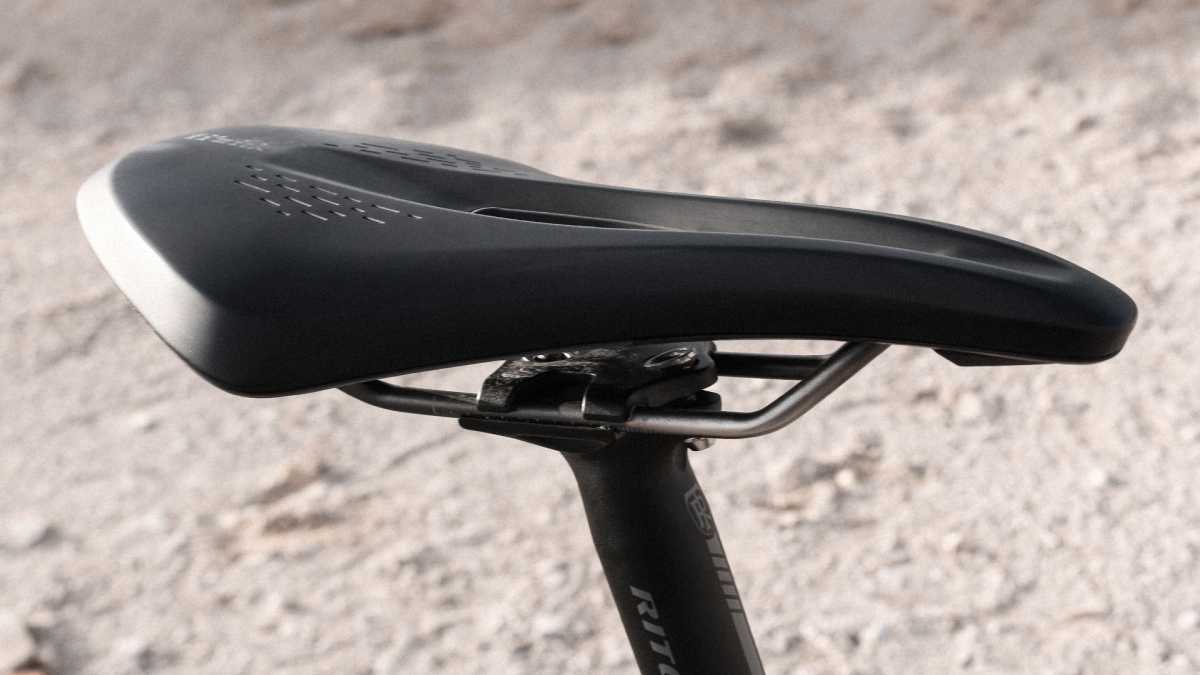
The Terra Argo X3 is available in two different width options: 150 or 160mm. Construction-wise, it uses a flexible carbon-reinforced nylon shell and Fizik’s proprietary Kium (chromoly) hollow rails. This saddle represents modern engineering applied to long-distance comfort.
Innovative Leather Alternatives
Selle Anatomica X Series (X1 and X2)
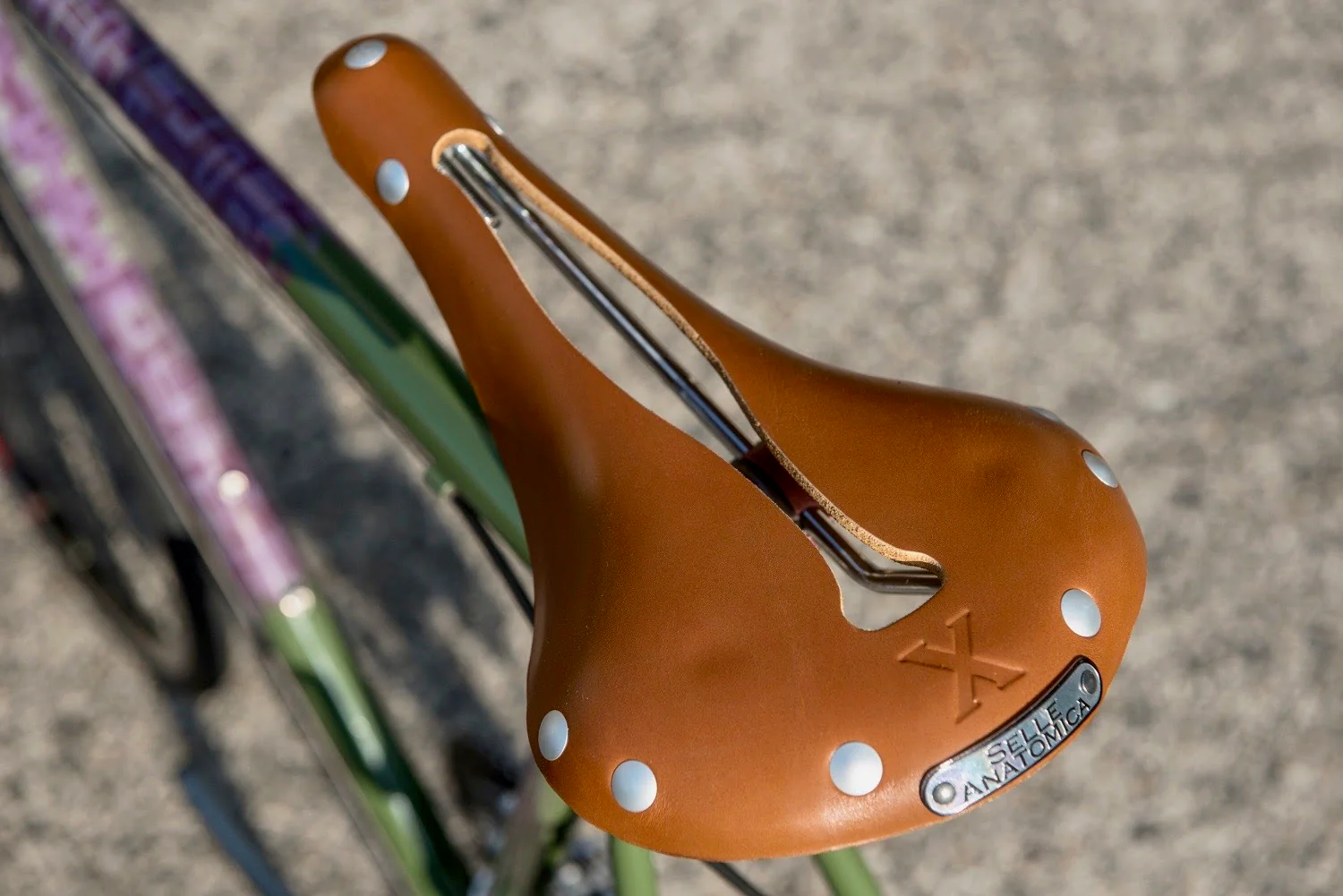
These saddles feature WaterShed leather supported by a stiffer laminate layer and exceptionally long chromoly rails. The slot design provides instant comfort without a break-in period, eliminating perineal pressure, sit bone pain, and saddle sores from day one.
The anatomical slot design makes these saddles particularly popular among riders who want leather comfort without the traditional break-in period.
Women-Specific Design
Specialized Power Expert with MIMIC
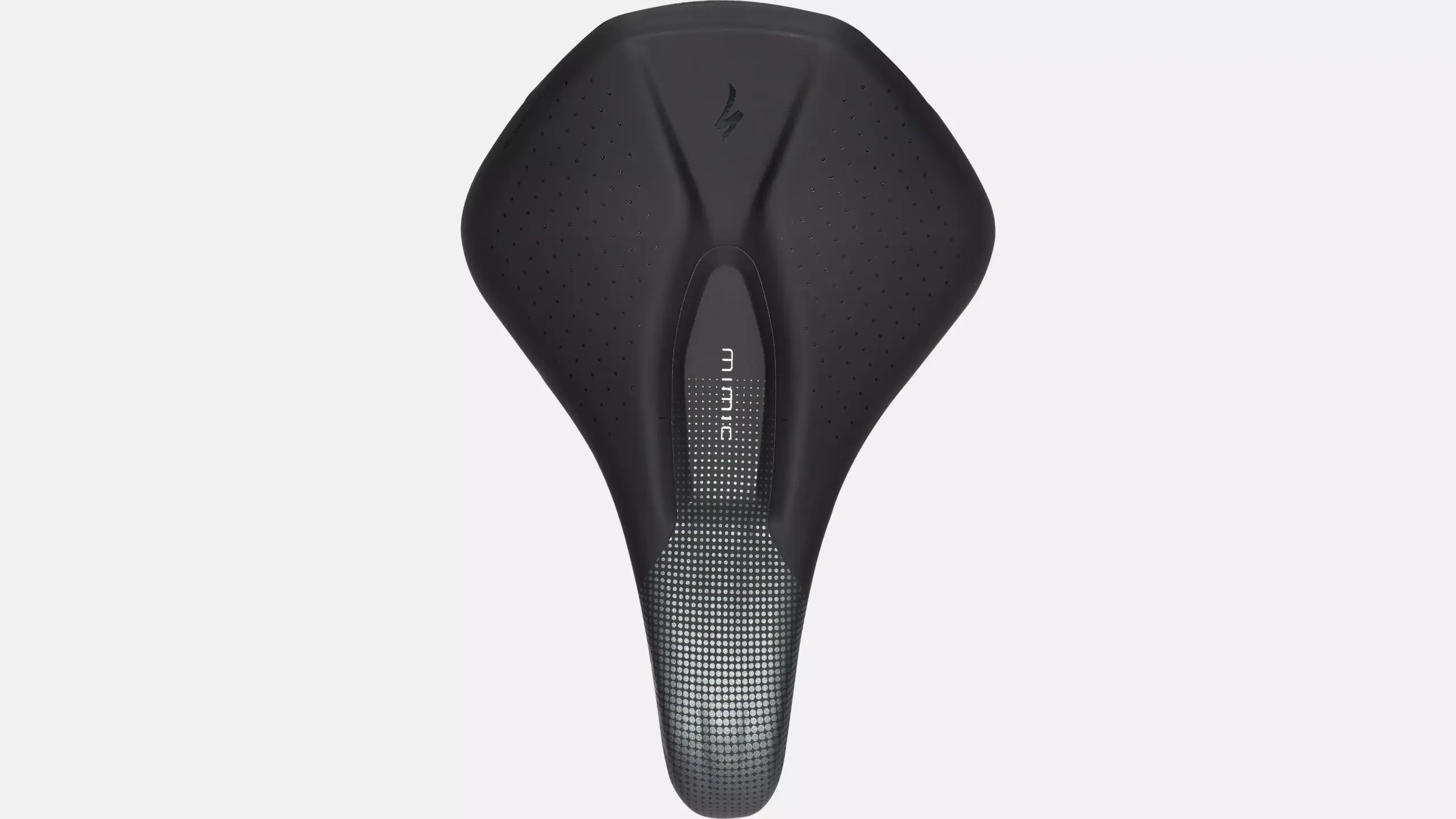
Designed for women, the Specialized Power Expert with Mimic is one of the most comfortable saddles we’ve tried—and it works for men, too. The MIMIC technology adapts to your body for optimal support, featuring hollow titanium rails and Level 2 padding for extended comfort.
Budget-Friendly Champion
Charge Spoon Saddle
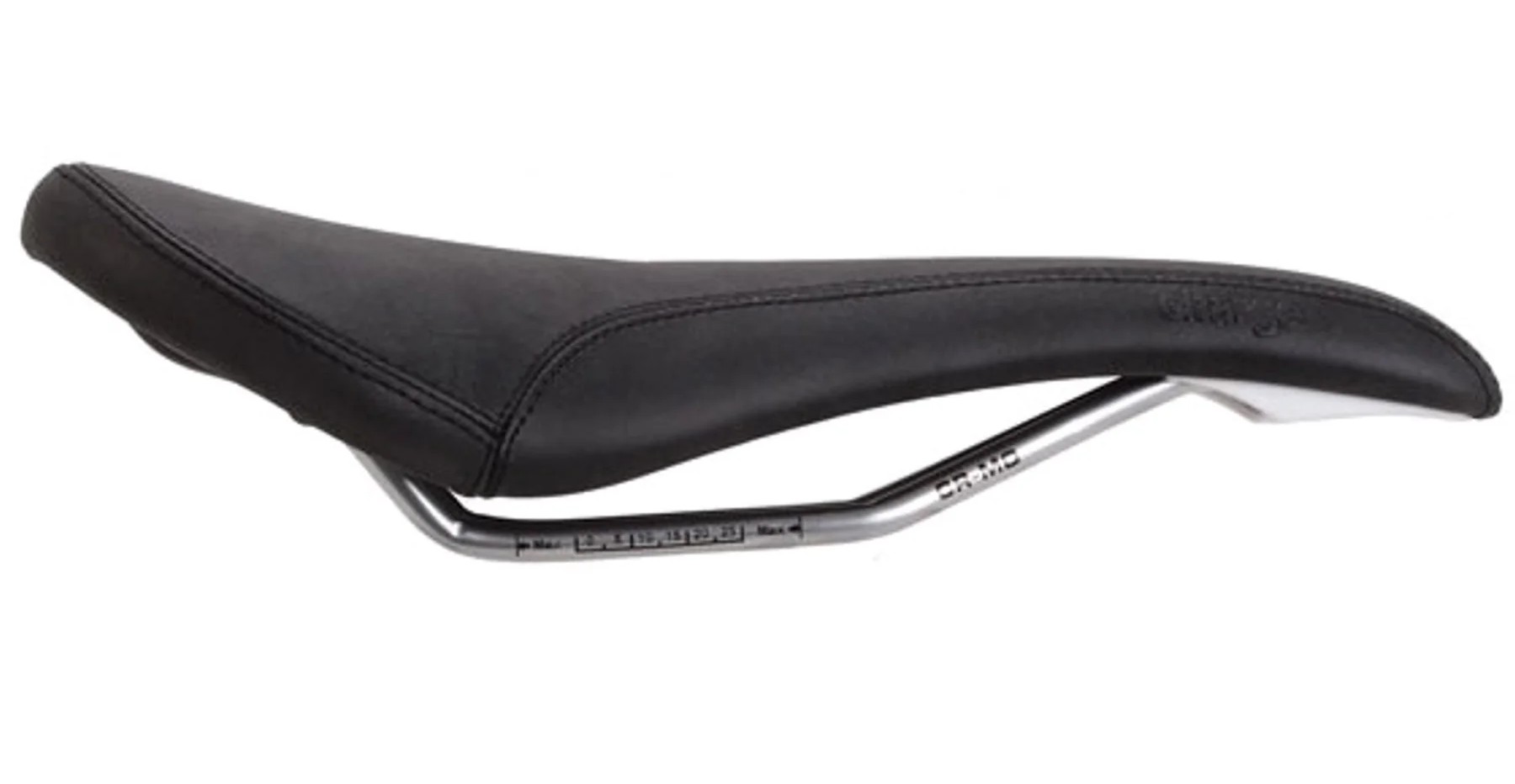
For budget-conscious tourers, the Charge Spoon offers exceptional value. Multiple experienced tourers recommend it, with one stating: “The Charge Spoon cost me £23, was instantly comfortable, and beat all other more expensive saddles I’ve tried, including Brooks. Expensive isn’t always best.”
Available for around $35, it has excellent ratings and proven performance across multiple bike setups.
Are Leather Bike Saddles Better? Considering Comfort vs. Ethics
In terms of longevity and comfort, leather saddles generally outperform synthetic options, though they typically cost more upfront. The main considerations with leather saddles are environmental susceptibility (requiring periodic treatment with saddle dressing) and the break-in period of several hundred kilometers.
However, if you can endure the initial break-in discomfort, leather saddles often provide lifetime comfort and value.
A Personal Perspective on Leather Saddles and Animal Welfare
As someone who deeply cares about animal welfare and follows a vegan lifestyle, I feel it’s important to address the ethical implications of leather saddles. While I acknowledge that leather saddles like the Brooks B17 offer exceptional comfort and durability, I cannot personally recommend purchasing new leather products due to the harm involved in animal agriculture and leather production.
The leather industry is inherently connected to animal suffering, and as cyclists who often seek connection with nature, it’s worth considering whether our equipment choices align with our values regarding animal welfare and environmental impact.
A Compromise for Conscious Cyclists:
That said, I would consider purchasing a quality leather saddle second-hand for several reasons:
- Preventing Waste: Buying pre-owned keeps functional products out of landfills, extending their useful life
- No New Demand: Second-hand purchases don’t directly support new leather production or animal exploitation
- Practical Comfort: If already manufactured, using these saddles makes practical sense for long-distance comfort needs
- Cost Effective: Second-hand leather saddles often represent excellent value while maintaining their comfort benefits
For cyclists seeking cruelty-free alternatives, excellent synthetic options exist, such as the Brooks Cambium series, WTB saddles with microfiber covers, and various high-quality synthetic touring saddles that provide comparable comfort without animal products.
The choice ultimately comes down to balancing personal ethics, comfort requirements, and practical considerations. Many modern synthetic saddles now offer exceptional comfort that rivals traditional leather, making it easier than ever to choose compassionate alternatives for your touring adventures.
Which is the Most Comfortable Bike Saddle?
Based on extensive experience with touring saddles and trekking bike saddles, the answer varies by individual anatomy and riding style. The Brooks B17 remains the gold standard and is considered by many to be the most comfortable bike saddle for long rides – once properly broken in. However, the 2025 market offers numerous excellent alternatives incorporating modern materials and ergonomic designs that may be the best bike saddle for long trips depending on your specific needs.
While some Brooks saddles receive mixed reviews, the classic B17 has proven itself as the original and best when it comes to comfort on the bike for bicycle touring applications.
Choosing the best touring bike saddle or most comfortable bike saddle for long rides is highly personal and depends on your anatomy, riding style, and comfort preferences. While the Brooks B17 remains the best Brooks saddle for touring and the gold standard for many long-distance cyclists, the 2025 market offers numerous excellent alternatives for the best saddles for bikepacking and bicycle touring.
Consider your sit bone width, riding position, material preferences, and budget when selecting from touring saddles and trekking bike saddles. Remember that even the most comfortable bike saddle may require proper positioning and a brief adaptation period to deliver optimal comfort for your touring adventures.
The investment in a quality touring saddle – whether it’s a classic Brooks saddle, modern bikepacking saddle, or specialized endurance bike seat – pays dividends in comfort and enjoyment over thousands of miles of cycling adventures.

